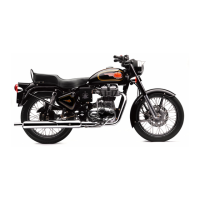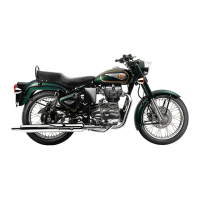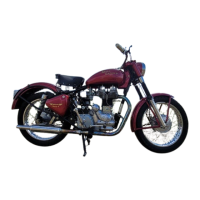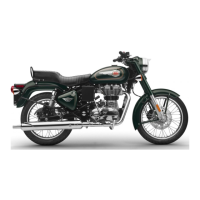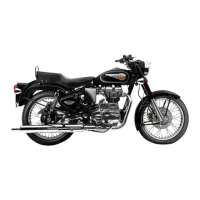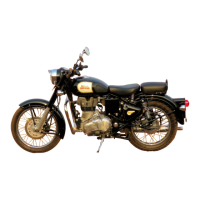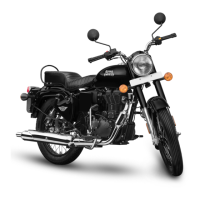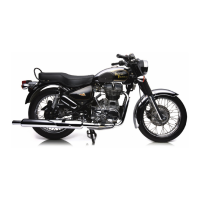CHAPTER
3
-
BASIC DAY-TO-DAY MAINTENANCE: LUBRICATION, CLEANING, AND ADJUSTMENTS
CHANGING OILS
I.
Engine
Since
it
is constantly being polluted by combustion byproducts and wear metals, the engine oil must be changed much
more often than the others. Every 2000
miles/3200 km for a run-in engine
is
about right. More often if your miles
are in short trips. Factory recommendation
is
for SAE50 non-detergent motor oil. A lot of users report good results
with synthetic oils and/or multi-grades. Let your conscience be your guide, but remember that you want
SAD0 final
viscosity when hot
-
such as
is
claimed for SAE20W-50. For colder climates, a top viscosity of SAE 40 when warm
is
recommended, using straight grade SAE 40 or SAE 15W-40.
As mentioned earlier, the Bullet's dry-sump system involves two oil pumps, the first drawing oil from the oil tank (this
is cast integrally with the engine's crankcase, or sump,
but
they are e~clusive of one another), and running
it
through the
felt-element filter to the
big-end/connecting rod journal. The oil passing through the big-end bearing is then thrown
around the sump, lubricating the cylinder under the piston, and the bearing supporting the crankpins on each side of
the flywheel assembly, finally accumulating in the bottom of the crankcase
-
the sump.
From the sump,
it
is collected through a filter screen by suction from the second pump, the scavenge pump, and
sent to the rocker arm bearings at the top of the cylinder head. Passing through these rocker blocks,
it
runs down
the
pushrod tubes to the timing chest (the inside of the timing cover), where
it
lubricates the timing gears and oil
pump(s) worm drive. The gears work
it
up to the upper ones, which funnel
it
into a hole in the back of the timing
case back into the oil tank.
It will be seen that there are a number of places in which the
circulating oil accumulates, namely the oil tank, the
sump, the oil filter housing, and the bottom of the timing chest, although the latter holds so little oil
it
is hardly of
consequence. The oil tank, of course, must be drained, as this
is
where the majority of the 2.25 Liters
(-2
qts
US,
1.6
qts
Imperial) oil in the engine will be found. The oil filter housing will be found to hold the next largest deposit,
and it should of course be drained and the felt filter element cleaned in washing solvent, kerosene, or diesel fuel.
Metal
~asherA
L
Spring
Note carefully the order in which the various springs and
washen come out; place them in a clean tray in order as
you dismantle, and keep them in this order as you clean
them, to ensure that they go back together in proper
sequence.
Since the oil should be changed with the engine hot and
recently run, the scavenge pump will have the sump
preq
well dry
-
but the filter screen
-
the scavenge oil pump
pickup tube is inside this screen, which is attached to the drain plug
-
should be checked and/or cleaned as part of an
oil change, so the sump drain plug should be pulled as well.
Oil change intervals are also a good time to check the quill seal.
16
The Enfield
BULLET MANUAL
by
Pete Snidal
O
ZOO2
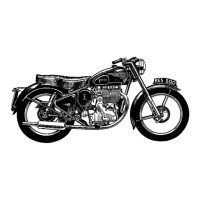
